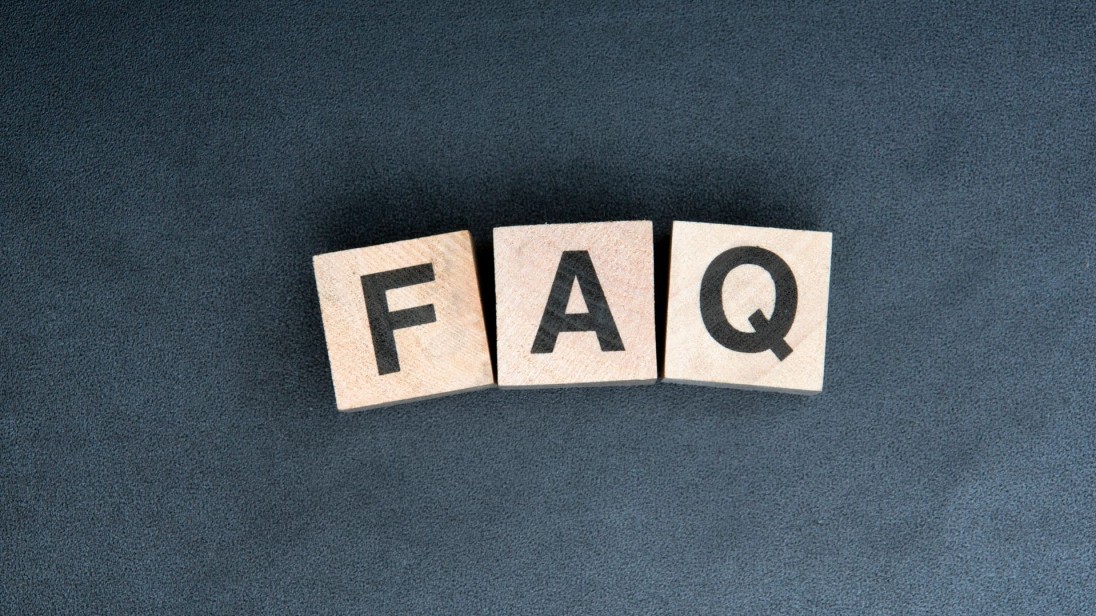Amazon boasts over 300 million active customers worldwide, and thousands of other sellers are joining it every day. Amazon FBA vs FBM is one of the first decisions that a seller needs to make, as the fulfilment format will define one of these aspects: cost, customer experience, and their potential to expand.
In FBA (Fulfilment by Amazon), you transfer your inventory to Amazon or its warehouses, and they take care of the storage, packing, delivery, and customer services. FBM (Fulfilment by Merchant) places the usage of inventory and shipping in your own hands, which offers you greater control, but it comes at a cost.
The reality is, there is no single victor in the FBA vs FBM debate. Not all sellers benefit equally from FBA; Prime eligibility and hands-free fulfilment help some sellers to grow faster, whereas other sellers achieve better cost savings under FBM and on larger and bulkier products or lower-volume items.
It will provide you with a clear comparison of selling on Amazon FBA and FBM, with cost, branding opportunities, and real-world use cases to help you choose the model that best fits your business.
What is Amazon FBA?

Amazon FBA (Fulfilment by Amazon) is one of the most successful means of selling on Amazon, as it helps sellers be fast, trusted, and convenient. When it comes to Amazon seller FBA vs FBM, the former is better when you have a small team or startup, and you want to expend your energies maintaining growth rather than on logistics.
In this model, the sellers ship their stock to the Amazon fulfilment centres, where Amazon takes charge of storage, packing, shipping, customer service, and returns. This high-level strategy enables sellers to concentrate on selling and growing rather than on routines.
Benefits of FBA
- Prime eligibility: Items moved with FBA have a Prime badge, which immediately creates trust and can be a major boost to purchases.
- Faster shipping: Amazon has its own logistics system, which allows receiving the product within one day or 2 days in most regions, and this factor makes customers more inclined to make the purchase.
- Customer trust: Buyers believe that Amazon's policies are trustworthy, and so they are less likely to hesitate when ordering products fulfilled by Amazon.
- Scalability: No matter how many you sell, whether that be 50 or 5,000, Amazon has sufficient storage and people to ensure growth does not slow you down.
Drawbacks of FBA
- Fulfillment fees: Amazon charges per item picked, packed, and shipped and can cut profits unless the cost is accurately estimated.
- Storage costs: Storage fees are high on long-term or oversized offerings, so storage of a slow-moving inventory is risky.
- Less packaging control: Amazon manages delivery, limiting your scope of designing packaging and branding.
What is Amazon FBM?

Amazon FBM (Fulfilment by Merchant) means that the sellers do everything on their own. This is the best alternative to FBM vs FBA Amazon because it is more hands-on, but it is more demanding as well. Sellers process their products through selling, packaging, shipment, and customer care either on their own or through a third-party logistics provider.
This plan is favoured by sellers who already have warehousing goods or sell oversized, heavy, or low-volume items, which cannot afford to ship through FBA.
Benefits of FBM
- Lower fees: You do not pay Amazon storage and fulfilment costs, which helps to defend margins.
- Full control over packaging: Sellers have access to use branded boxes, inserts, or special touches that reinforce their brand.
- Flexibility: It is ideal when the product is unique, local sellers, or a business with already established logistics.
Drawbacks of FBM
- Scaling challenges: It becomes difficult to store, ship, and receive returns without a dedicated workforce as sales increase.
- No automatic Prime badge: Your products will not receive a Prime badge unless you become Seller Fulfilled Prime, which can impact visibility.
- Customer service load: Handling returns, refunds, and enquiries takes more of your time and resources.
Key Differences Between Amazon FBA and FBM

Cost Considerations in FBA vs FBM

Amazon FBA vs FBM Cost is no doubt another significant consideration when sellers determine which model to use with Amazon. The model you adopt not only influences the portion of profits you retain but also the ease with which operations will pass. Both FBA and FBM are associated with both apparent and latent expenses, so we will sort it out.
FBA Costs
FBA have nearly everything done, but the charges are high. The items that are best suited to FBA are those that are liquid and have good margins. Slow-turning or bulky inventory may drive expensive storage charges and surprise expenses.
- Fulfillment fees: There is a fee from Amazon for picking, packing, and shipping each unit you sell. This is approximately $3-$4 per unit, but charges surge in case of bulkier or heavier products. If you are selling bulky items, like furniture, fulfilment costs can gobble up a large part of your profits.
- Storage fees: Amazon charges monthly storage fees based on the space your products take up. From January to September, the standard cost is around $0.78 per cubic foot, but during the holiday season (October to December), fees rise to about $2.40 per cubic foot. This seasonal spike means unsold products sitting in Amazon’s warehouse can become very expensive.
- Extra costs: In addition to this, FBA sellers incur a charge for processing returns, labels, or removal orders if a product does not sell. Items that remain in warehouses longer than 180 days will be charged a long-term storage surcharge. Unless you keep stock levels in check, these extra costs can silently eat away at profits.
FBM Costs
Using FBM exempts you from Amazon's storage and fulfilment costs, but they do not leave that cost-free. They instead switch to your business. FBM is most successful when the seller has effective logistics already, or when they deal with large or niche products, or products on which they have slow sales. As an example, a seller who sells heavy gym equipment at the warehouse can save more under FBM than under the high oversized fees imposed by Amazon under the FBA program.
- Warehousing and storage If you own your own facility, rent, utilities, and staff will all have to be paid. When you utilise a third-party logistics company, their storage charges will apply and can fluctuate based on the number.
- Shipping and packaging FBM sellers foot the full shipping costs. This entails carrier costs, packaging costs, and labels. Bulk shipping contracts may lower costs, but new sellers tend to pay higher per-unit costs.
- Customer service and returns FBM sellers, unlike FBA, have to process returns, respond to customer inquiries and resolve disputes on their own. Such activities are time-consuming and might need new hires due to the increasing volume of orders.
Comparing Both
- FBA: Increased upfront costs, but time-efficient, and scale, and with Prime eligibility, which can sell items much faster.
- FBM: Low direct Amazon cost, you pay your own warehousing, shipping, and service costs, which tends to offset it. Works best when you have existing logistics capacity or products that are not suited to FBA.
A comparison between the two models reveals that FBA is scaled and FBM is more controllable. A lot of sellers investigate what is Amazon Business Account, because it allows them to get bulk discounts, tax benefits, and tools to make their sales on Amazon more efficient.
Which Fulfillment Method Fits You Best?

Choosing between Amazon FBA vs FBM is not about which one is universally better, but about which one fits your product type, resources, and growth strategy. Here’s a closer look at when each model makes more sense:
When FBA Works Best
- You sell small, lightweight products with steady demand. These items move quickly, which means storage fees stay low and fulfillment costs remain predictable.
- You want a hands-off system where Amazon manages storage, delivery, customer service, and returns. This is especially useful for beginners or small teams that do not have the staff to handle logistics.
- You want the Prime badge advantage. Products fulfilled by Amazon automatically qualify for Prime, which makes them more visible and appealing to buyers who expect fast shipping.
- You are looking to scale quickly without heavy investment in warehouses or shipping infrastructure. Amazon’s fulfillment network allows you to expand from selling 100 units to 10,000 without major operational changes.
When FBM Works Best
- Your products are large, bulky, or slow-moving. Paying Amazon’s storage and oversized item fees can quickly erode profits. By managing fulfillment yourself, you avoid those extra charges.
- You already have logistics in place, such as your own warehouse or a trusted third-party provider. This gives you more freedom to customize packaging, add inserts, or create branded unboxing experiences.
- You want direct control over customer relationships. Since you handle communication, packaging, and after-sales support, it’s easier to build trust and create loyalty through personalized service.
- You sell niche or seasonal products where sales volume is unpredictable. FBM allows you to list products without committing to large FBA inventory shipments that might sit unsold in warehouses.
Branding Differences Between FBA and FBM

1. Presentation and Customer Connection
With FBA, sellers rely on Amazon’s packaging which limits how much personality you can add. Customers usually receive products in Amazon-branded boxes, and your chance to impress is reduced to product inserts or small logo placements. On the other hand, FBM lets you design the full unboxing experience. From custom boxes to branded thank-you notes, you can create moments that help customers connect emotionally with your brand.
2. Communication and Brand Personality
FBA places Amazon in charge of customer service. While this saves time, it also removes the chance to show your brand’s voice in customer interactions. FBM allows sellers to speak directly with buyers. Personalized responses, problem solving, and thoughtful communication all strengthen trust and loyalty.
3. Visual Branding and Packaging Tactics
Even within FBA, there are small opportunities to build recognition through branded inserts, warranty cards, or guides inside the box. But FBM sellers have full freedom to design every element. Custom packaging, stickers, and consistent colors across boxes and labels ensure buyers instantly recognize your products.
4. Differentiation in Crowded Markets
When thousands of similar products exist, the sellers who stand out are those who present a strong identity. FBA sellers often blend into Amazon’s ecosystem, making it harder to be remembered. FBM sellers can stand out more clearly by delivering a branded experience that competitors cannot copy.
Why Branding Beats Fees and Fulfillment
Strong branding isn’t optional, it is what turns a one-time buyer into a loyal customer. Whether you choose FBA or FBM, a clear identity, consistent visuals, and thoughtful touches make all the difference. Building this foundation starts with understanding what brand identity is and how to create it, because the right identity system makes your Amazon store look professional, credible, and instantly recognizable.
FAQs About Amazon FBA vs FBM

Is Amazon FBA better than FBM?
It depends on your business model. FBA is better for sellers who want fast Prime delivery, strong customer trust, and fewer logistics headaches. FBM works better for sellers who have existing storage or want more control over packaging.
Is FBA more profitable than FBM?
Profitability depends on product type and margins. For small, lightweight items, FBA can be more profitable despite fees because of higher sales volume. For bulky or niche products, FBM often helps you keep more profit per unit.
Can I use both FBA and FBM at the same time?
Yes. Many experienced sellers combine both methods. For fast-moving products they use FBA, and for heavy or slow-moving items they use FBM. This hybrid approach balances cost and branding flexibility.
Which is cheaper: FBA or FBM?
FBA comes with higher fees, especially for storage and fulfillment, but it saves time and boosts sales through Prime eligibility. FBM avoids those fees but shifts costs to shipping, warehousing, and customer support.
Which is better for beginners?
For beginners comparing FBA vs FBM Amazon, FBA is usually easier since Amazon handles fulfillment, customer service, and re
Key Takeaways
- Amazon FBA vs Amazon FBM comes down to convenience versus control. FBA saves time with Prime delivery, while FBM gives you full flexibility in branding and packaging.
- Amazon FBA vs FBM fees show a clear trade-off: FBA charges more for storage and fulfillment, while FBM shifts costs to your own logistics and shipping.
- Amazon seller FBA vs FBM decisions should always be based on your product type, demand, and growth goals.
- Strong branding is what helps sellers stand out when selling on Amazon FBA vs FBM, no matter which model they choose.
Conclusion
Understanding the Amazon FBA vs FBM difference is the first step to choosing the right path. FBA is often better for fast-moving, lightweight items, while FBM vs FBA Amazon favors sellers with larger products or their own logistics setup. At the end of the day, your success depends less on whether you pick FBA Amazon vs FBM and more on how you present your brand.
If you treat your Amazon journey as more than just a side hustle and invest in a professional identity, you can grow faster and stand apart from competitors. With tools like Zoviz, building your logo and brand system becomes simple, giving you a head start in a crowded marketplace.








